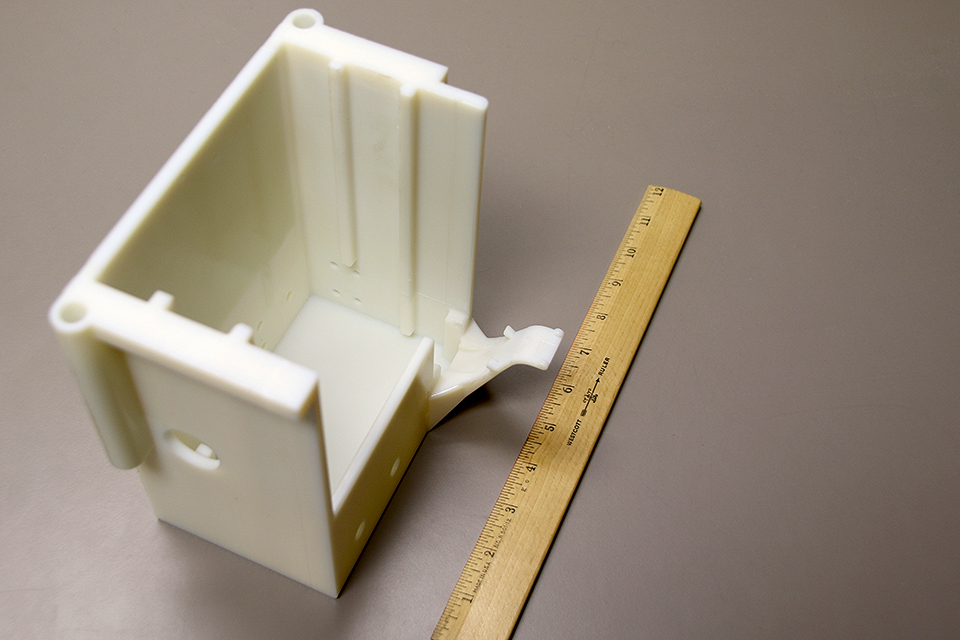Additive Manufacturing
Pantex works on the manufacturing industry’s cutting edge. The sites are using additive manufacturing, also called 3‑D printing, to build solid objects by printing and fusing layer upon layer of metal powder. Both sites have metal and plastic additive manufacturing capabilities.
Additive manufacturing offers many benefits, including reduced waste and fabrication of complex geometries and features that would be impossible or challenging with traditional fabrication. In addition, additive manufacturing offers the ability for fast design iterations and the ability to condense parts where, traditionally, welding or fasteners would be required. The true benefit from the technology comes from designing for the technology — designing for increased functionality, reduced weight and maximum strength-to-weight ratios.

Pantex produced this part for an electrostatic discharge footwear checker using additive manufacturing.
Pantex has traditionally used subtractive manufacturing to create parts. With subtractive manufacturing, a mass of material is whittled away, with a lathe or other tooling machine, until the desired part is created. This method results in not only the part that was created but also a pile of waste tailings and material. With additive manufacturing, layers of material are fused to create the part, leaving little to no waste. In the case with powder metals, the unused powder is sieved and recycled for the next build, allowing near full-material recovery for fabrication.
With traditional manufacturing methods, designs often required removing the least amount of material required to obtain a final part. With additive manufacturing, it’s the opposite: using the least amount of material required for the final part to meet the customer’s requirements. By reducing weight through design, the part is not only lighter but also faster and less expensive to manufacture.
Pantex is focused on moving additive manufacturing research into operational implementation. The sites are working on process and material development, metal tooling and prototypes that will further the research and development of additive manufacturing in national security applications.
